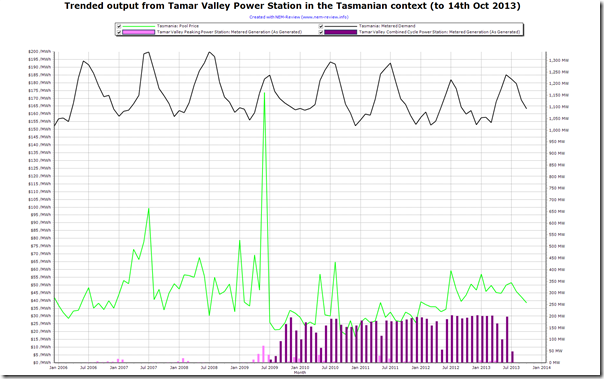The Tamar Valley power station was conceived in an environment where demand across the NEM was growing, where merchant generators were a possibility, when it was envisaged that there’d be multiple competing participants operating in Tasmania, and where water was increasingly scarce.
The environment today is significantly different from the above, so it was not really a surprise to read the note this morning of the mothballing of the Tamar Valley combined-cycle power station.
Please see these later comments with respect to Tamar Valley combined cycle plant to understand the specific error in the statement above.
As can be seen in this trend from NEM-Review, the station (when operated by Aurora Energy) had been producing at a fairly consistent average monthly output of 200MW (or about 15% of the average demand for the state). Now transferred to Hydro Tasmania as part of a broader slew of changes, the station appears to be surplus to the needs of the larger portfolio available to the generator.
We noted recently about the possibility that Wallerawang might be withdrawn from the market shortly, a victim of declining scheduled demand – these same factors will also have played a role in the decision for Tamar Valley (though we suspect that there are also local factors at work, as well).



Leave a comment